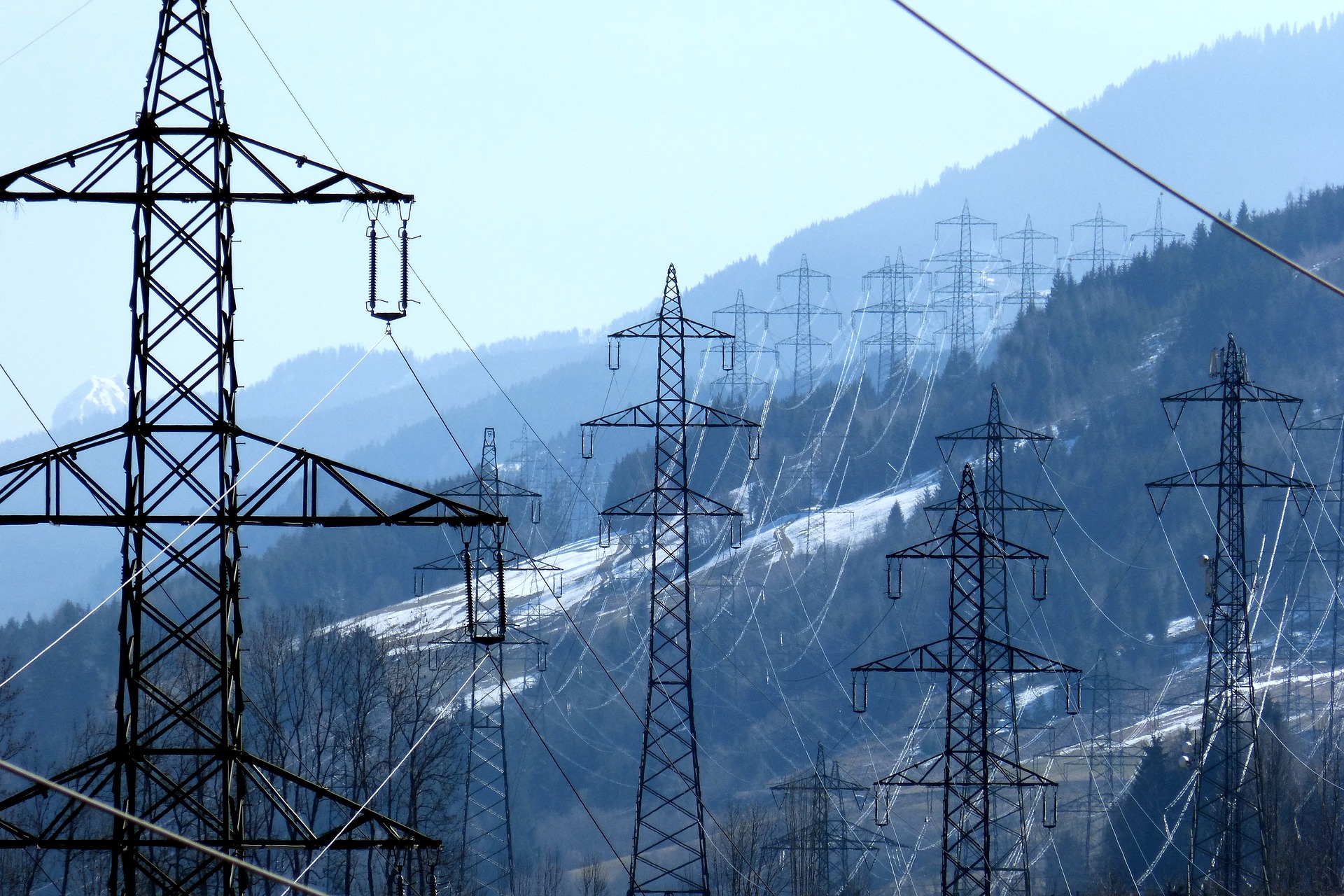
Connectivity shouldn’t be limited by geography. Whether you’re operating on a windswept oil rig or tending to mountainside farmland, being able to communicate and access data can be just as vital as when working in the heart of a smart city (sometimes more!). Yet, industries operating in remote regions often suffer from patchy coverage and unreliable network services, negatively impacting their operations. Here’s where NTN LoRaWAN offers a solution.
NTN LoRaWAN brings a breakthrough fusion of low-power IoT technology and satellite connectivity that’s opening up entirely new possibilities for businesses operating off the grid.
At EchoStar Mobile, we’re proud to be helping drive its adoption. In this blog, we take a closer look at what NTN LoRaWAN is, why it matters, and how it’s unlocking a new era of remote connectivity for critical industries.
What Is NTN LoRaWAN?
LoRaWAN is a wireless protocol designed for low-power, wide-area networks (LPWANs). It allows devices to transmit small packets of data over long distances using minimal battery power. LoRaWAN was developed with Internet of Things (IoT) requirements in mind, offering incredible value for everything from smart buildings and metering to logistics and agriculture.
LoRa technology has been around since 2009, with the network protocol LoRaWAN officially established in 2015. Since then, it has been enabling long-range, low-power communication for millions of sensors and devices. But its Achilles’ heel has always been coverage. If you were out of range of a fixed terrestrial gateway, you were out of luck! Therefore, the reach of LoRaWAN has traditionally been confined to populated or well-covered regions.
Non-Terrestrial Networks (NTN) are uniquely positioned to solve this challenge. NTN refers to satellite-based infrastructure that delivers connectivity from space. These effectively act as LoRaWAN gateways in the sky, overcoming the previous coverage limitations.
As LoRaWAN and NTN coverage unite, we‘re seeing an exciting new proposition: ultra-resilient, ultra-efficient IoT connectivity that works anywhere on the planet!
Why NTN LoRaWAN Matters Now
Expectations around connectivity are accelerating. With the fast-moving, always-on society in which most of us operate today, there is a soaring demand for reliable, efficient data access wherever we are.
For businesses, this demand translates into tracking assets across borders, monitoring infrastructure in remote terrain and automating operations in places where mobile coverage barely exists. Traditional networks simply can’t keep up with the scale or scope of what’s needed.
That’s why the convergence of satellite and low-power wide-area networking is arriving at exactly the right moment.
A combination of technical progress, market demand, and evolving standards is driving this shift towards scalable, satellite-enabled LoRaWAN connectivity. Advances in satellite technology, including the 3GPP Release 17 standard for Non-Terrestrial Networks, have made it both technically and commercially viable to link IoT devices directly to satellites. Meanwhile, LoRaWAN has matured into a globally adopted standard for cost-effective, low-power communications across large distances. While LoRaWAN was initially designed for unlicensed ISM bands, EchoStar Mobile is one of the few satellite operators that offers connectivity over a licensed band (the S-band). This means that users benefit from a carrier-grade solution with interference protection, improved quality of service and enhanced security and control.
With LoRaWAN now able to leverage NTN, its full potential can finally be realised: global coverage, minimal power consumption, and resilient, low-latency data exchange. And without the need for fixed infrastructure, it means even the most inaccessible environments can access reliable connectivity, fulfilling the demand for efficient data access wherever we operate.
Use Cases and Real-World Applications
The potential of NTN LoRaWAN lies in its ability to bring the unreachable within digital reach: think snow-covered pipelines stretching across the Alps, drifting cargo ships in the North Sea, wind farms spinning on the isolated Scottish coastlines or cattle herds roaming the Pyrenees. There are no cables and no towers, just low-power sensors speaking directly to satellites, quietly, reliably, and from almost anywhere on Earth.
Let’s take a closer look at just a few of the real-world challenges this technology is now poised to transform:
 Agriculture that never loses sight of the field
Agriculture that never loses sight of the field
On vast farms where mobile signals vanish and power lines don’t reach, NTN LoRaWAN enables farmers to monitor soil moisture, track livestock, and manage irrigation with pinpoint accuracy. It’s precision agriculture, even in the wildest terrain.
 Environmental monitoring that stays one step ahead
Environmental monitoring that stays one step ahead
From shrinking glaciers to rising river levels, real-time data is critical for predicting and preventing natural disasters. NTN IoT connectivity enables end-to-end monitoring across vast and remote landscapes, linking sensors in hard-to-reach locations, such as high-altitude icefields, lakes, dams, and flood-prone valleys. With continuous insight into changing conditions, authorities and researchers can act sooner, plan better, and minimise hydrogeological risk.
 Utilities that see trouble before it strikes
Utilities that see trouble before it strikes
For energy and water providers, NTN LoRaWAN enables proactive infrastructure monitoring in some of the most remote and high-risk locations. Everything from pressure sensors on mountain pipelines to water-level alerts deep in forests can send critical data without delay or dependency on ground networks.
 Logistics that span borders and beyond
Logistics that span borders and beyond
In logistics, NTN LoRaWAN cuts through the blind spots, connecting shipping containers and rail freight as they journey thousands of miles. With no roaming charges, no network switching and no dead zones, it’s now possible to maintain visibility across operations worldwide.
 Emergency response that’s ready for anything
Emergency response that’s ready for anything
In disaster zones, terrestrial infrastructure can be damaged or non-existent. NTN LoRaWAN can provide a low-bandwidth lifeline for environmental sensors, early-warning systems, or basic tracking tools, helping teams stay aware, respond faster and rebuild more efficiently.
We’re only at the beginning of what NTN LoRaWAN can offer. As it continues to evolve, so too will the creative and valuable ways in which industries use it.
EchoStar Mobile’s Role in Advancing NTN LoRaWAN
Connecting sensors via satellite isn’t a new concept. However, making it scalable, energy-efficient, and interoperable is where the real breakthrough lies. And this is the area in which EchoStar Mobile has had a key role in progressing.
Our pan-European LoRa®-enabled IoT network is the first of its kind, providing direct-to-satellite LoRa®-based connectivity for low-power IoT devices. The solution removes the need for expensive terminals, fixed terrestrial infrastructure and multiple subscriptions. Instead, it enables lightweight, battery-powered IoT sensors to be deployed in even the most challenging environments and send and receive data reliably for multiple years. The network solution also offers dual-mode capabilities, connecting to terrestrial services when available to enhance cost-efficiency.
EchoStar Mobile partners with a variety of device manufacturers, OEMs, and system integrators to deliver end-to-end solutions for a variety of use cases. Please take a look at our LoRa® Satellite Marketplace for more details. Our VP and GM, Telemaco Melia, also chairs the LoRaWAN® Over Satellite Task Force, helping drive global standards for hybrid terrestrial-satellite IoT connectivity through collaboration with industry leaders and technology partners.
Looking Ahead: What’s Next for NTN LoRaWAN?
As technology continues to push the boundaries of what’s possible in connectivity, next-generation IoT is likely to see smaller terminals and gateways, smarter edge devices and even more energy-efficient or energy-independent designs. NTN LoRaWAN will offer a foundation to this progression, enabling devices to connect over large distances and in challenging terrain with low power requirements.
In a bid for true global connectivity, standardisation efforts will likely gain momentum too, laying the groundwork for complete interoperability across terrestrial and satellite networks. With more accessible technology, adoption will scale, and we can expect an explosion of creative use cases, delivering incredible value in a diverse range of applications, across borders, geographies and hostile terrain.
EchoStar Mobile will continue to drive forward this progress. Collaborating with a variety of partners across the field, we aim to help define the future of NTN LoRaWAN and to build resilient, future-ready IoT networks for all. If you’d like to know more about our work or discuss connectivity for a use case you’re developing, please get in touch with our team.


